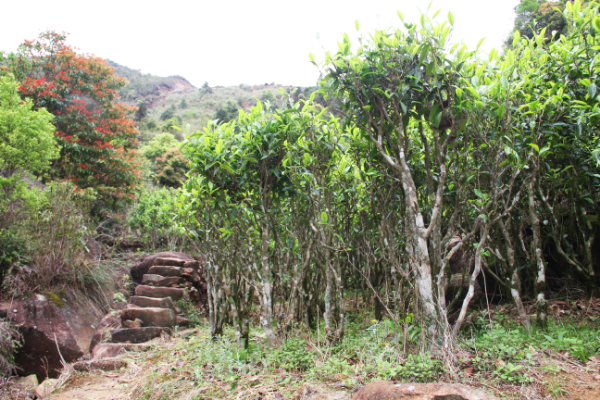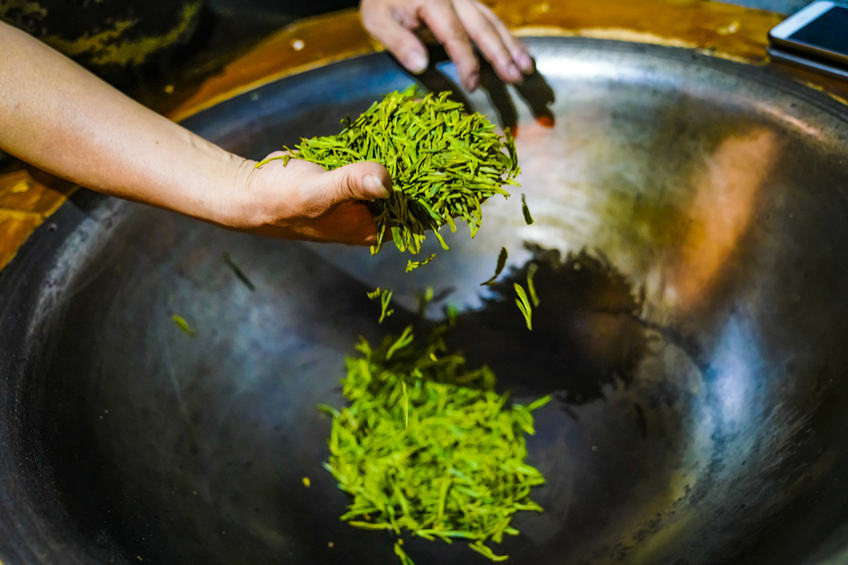How many types are there in Phoenix single fir? Which kind of Phoenix single fir oolong tastes best?
The origin of the name Brother this kind of tea gets its name from the Chinese word "brother" because the two primitive trees are almost the same in shape and grow very close to each other, with crossed branches like two brothers playing. Unlike black tea in Fujian and Guangdong, sweet-scented osmanthus or spice extract is added during baking. The fragrance of sweet-scented osmanthus is named after the natural aroma of finished tea. The original name of Gardenia jasminoides was the tea flavor completed by Wushu in 1956, and now there are several corrupt names, including (Huangzhi and Huangzhi), which can still be found in the local market. During the Great Leap forward, it was also renamed Dafeng Harvest Tea (Dafeng Tea) because of its impressive yield and further renamed "East is Red," during the Cultural Revolution. The fragrance of ginger flowers was originally called ginger mother, and later it was also called Tongtian. Ginger flowers were named sweet and ingenious spicy tea. This kind of tea gets its name because its leaves are like small iron saws. It is considered to be part of the "almond fragrance" subcategory of Dancong, and some people think that it is not significantly different from the standard almond variety.

A brief discussion on the confusion of the name of single-clump tea is different from most Chinese teas, the production of single-clump tea is highly localized and continues the dominant tradition of grafting rather than nutritional cultivation, which makes the tea trees in most single-clump tea fields can be traced back to a specific "mother clump". This is why there are extremely rich individual varieties in a township in a county, Fenghuang Township in Chaoan County, and all varieties have obvious identifiable characteristics. Having said that, language and economic factors have ensured that the clear identification of these varieties will still be a chaotic time. Chaozhou dialect, sometimes known as Chaozhou dialect in the world, was formed by immigrants from the north centuries ago. The isolation of Chaozhou people in the time of new parents has formed a unique vocabulary, grammar and intonation system that is difficult for Cantonese and Mandarin speakers to understand. This alone has led to widespread corruption of tea names, because tea names rarely written in local dialects are translated into Putonghua trademark names. Words with similar meaning or pronunciation are often replaced. The hidden hole (also known as Aokou / Tuofu / Ofuhou) is an extreme example. Further English translation will only aggravate the confusion that may be caused by these corruption. At the same time, the atomization of production makes standardization difficult to implement. The production of Dan Cong still obviously stays at the family level. The new wave of cooperation sweeping green tea producers in many Chinese provinces has had less impact in Chaozhou. This means that individual families, processing workshops and teahouses have all set up their own sales networks independently. Why would such a market participant change the name of a kind of tea that sells well and is familiar to customers? This is true for corruption and traditional names such as "the East is red". To make matters more complicated, single clump breeding and cloning have been evolving since the decollectivization began in 1980. Nutritional cultivation and selective breeding make earlier varieties diverse, and even if renamed by breeders, they may eventually be sold under the banner of more familiar source varieties. Large-scale comprehensive production and strong government intervention are needed to put an end to the current anarchy of Dancong variety names.
Important Notice :
前街咖啡 FrontStreet Coffee has moved to new addredd:
FrontStreet Coffee Address: 315,Donghua East Road,GuangZhou
Tel:020 38364473
- Prev

Tongtian Xiangdancong oolong tea where to buy more authentic? How much is the ginger fragrance single fir or two?
Species: ginger fragrance single fir type: charcoal roasted Dancong Oolong Tea Harvest: spring 2021 region: Fenghuang Village, Guangdong Province, China Ginger fragrance is one of our favorite fragrances of the year. This is a moderately baked single fir oolong tea with dried leaves giving off an incredible aroma of freshly baked bread with honey.
- Next

Cinnamon-flavored oolong tea is cinnamon added in the production process? What is the annual output of cinnamon single fir? Is it expensive?
When you think of charcoal barbecue, what do you think of? What do you think most about is sausage or chicken wings? Did you know that charcoal baked tea is very precious in the tea world. You may wonder why tea needs charcoal baking, because tea usually pursues its delicate taste, while coffee likes its strong roasting aroma.
Related
- The milk tea cup becomes smaller?! Overlord Tea Girl launches a new "Return to Yunnan" series
- Accused of selling counterfeit and high-priced coffee beans! Well-known boutique coffee brand "Oukelao" bowed and apologized!
- How to make espresso dumplings? Can I eat coffee and glutinous rice balls together?
- Save the unformed and stagnant powder cakes in one second! What is the problem with stagnant water in the powder bowl of the espresso machine?
- What does hand-brewed coffee stop mean? Why is it not recommended to make coffee by hand?
- Is it normal to smell like coffee? Why does coffee smell like alcohol? What's wrong with the strong smell of cold extract ice dripping ice brewed coffee?
- How to solve the problem that hand-brewed coffee extraction takes too long? Why is the water flowing so slowly when making coffee?
- The main points of making Australian white coffee, the proportion details, how does Australian white properly foam and blend the flowers?
- Can ice water make cold extract coffee? What is the difference between room temperature water and ice water for making cold coffee?
- What milk is best for making latte and white Dirty coffee? What is the difference between different brands of fresh milk and pure milk for making coffee?

